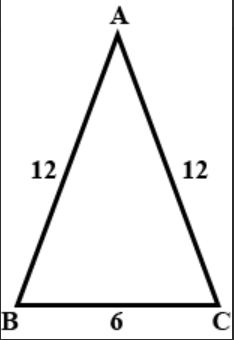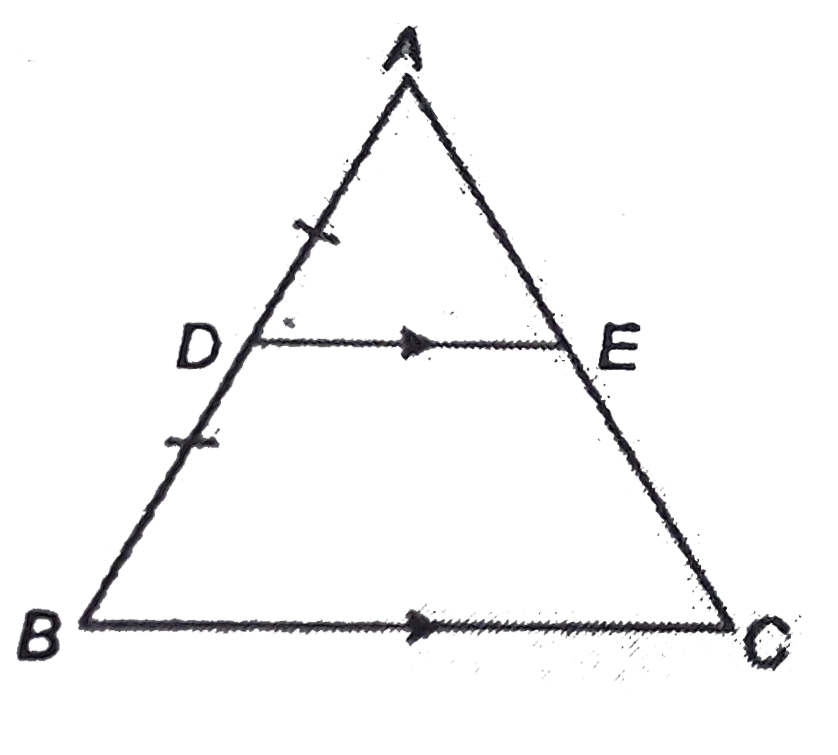Two coplanar triangles ABC and PQR re such that the lines drawn through the vertices of △ABC parallel to the sides of △PQR are concurrent. Prove that the lines drawn through the vertices of △PQR parallel to sides of △ABC are concurrent.
To prove that the lines drawn through the vertices of triangle PQR parallel to the sides of triangle ABC are concurrent, we will follow a systematic approach using vector algebra.
1. Setup the Triangles:
Let triangle ABC have vertices A, B, and C, and triangle PQR have vertices P, Q, and R. We know that the lines through the vertices of triangle ABC parallel to the sides of triangle PQR are concurrent.
2. Position Vectors:
Assign position vectors to the vertices of the triangles:
- Let the position vectors of A, B, and C be represented as vectors a, b, and c respectively.
- Let the position vectors of P, Q, and R be represented as vectors p, q, and r respectively.
3. Concurrent Lines from ABC:
The lines drawn through A, B, and C parallel to sides QR, PR, and PQ respectively are concurrent. This means:
- The line through A parallel to QR can be expressed as: a + k(q - r) for some scalar k.
- The line through B parallel to PR can be expressed as: b + m(r - p) for some scalar m.
- The line through C parallel to PQ can be expressed as: c + n(p - q) for some scalar n.
Since these lines are concurrent, we can denote their intersection point as point H.
4. Setting Up Equations:
From the concurrency condition, we can set up equations based on the position vectors:
- Let the concurrent point H be represented by the position vector h. Thus, we have:
- h = a + k(q - r) (1)
- h = b + m(r - p) (2)
- h = c + n(p - q) (3)
5. Lines from PQR Parallel to ABC:
Now we need to show that the lines drawn through P, Q, and R parallel to sides AB, BC, and CA respectively are also concurrent.
- The line through P parallel to AB can be expressed as: p + x(b - a) for some scalar x.
- The line through Q parallel to BC can be expressed as: q + y(c - b) for some scalar y.
- The line through R parallel to CA can be expressed as: r + z(a - c) for some scalar z.
6. Setting Up New Equations:
Similar to the previous step, we can set up equations for the concurrency of these lines:
- Let the intersection point of these lines be denoted as point K with position vector k. Thus, we have:
- k = p + x(b - a) (4)
- k = q + y(c - b) (5)
- k = r + z(a - c) (6)
7. Using the Concurrency Condition:
Since we have established that the lines through A, B, and C are concurrent, we can use this property to show that the lines through P, Q, and R must also be concurrent. By substituting the expressions for h from (1), (2), and (3) into the equations for k (4), (5), and (6), we can derive relationships that imply the concurrency of the lines through P, Q, and R.
8. Conclusion:
By showing that the lines through P, Q, and R can be expressed in terms of the concurrent lines through A, B, and C, we conclude that the lines drawn through the vertices of triangle PQR parallel to the sides of triangle ABC are indeed concurrent.
Let triangle ABC have vertices A, B, and C, and triangle PQR have vertices P, Q, and R. We know that the lines through the vertices of triangle ABC parallel to the sides of triangle PQR are concurrent.
Assign position vectors to the vertices of the triangles:
- Let the position vectors of A, B, and C be represented as vectors a, b, and c respectively.
- Let the position vectors of P, Q, and R be represented as vectors p, q, and r respectively.
The lines drawn through A, B, and C parallel to sides QR, PR, and PQ respectively are concurrent. This means:
- The line through A parallel to QR can be expressed as: a + k(q - r) for some scalar k.
- The line through B parallel to PR can be expressed as: b + m(r - p) for some scalar m.
- The line through C parallel to PQ can be expressed as: c + n(p - q) for some scalar n.
From the concurrency condition, we can set up equations based on the position vectors:
- Let the concurrent point H be represented by the position vector h. Thus, we have:
- h = a + k(q - r) (1)
- h = b + m(r - p) (2)
- h = c + n(p - q) (3)
Now we need to show that the lines drawn through P, Q, and R parallel to sides AB, BC, and CA respectively are also concurrent.
- The line through P parallel to AB can be expressed as: p + x(b - a) for some scalar x.
- The line through Q parallel to BC can be expressed as: q + y(c - b) for some scalar y.
- The line through R parallel to CA can be expressed as: r + z(a - c) for some scalar z.
Similar to the previous step, we can set up equations for the concurrency of these lines:
- Let the intersection point of these lines be denoted as point K with position vector k. Thus, we have:
- k = p + x(b - a) (4)
- k = q + y(c - b) (5)
- k = r + z(a - c) (6)
Since we have established that the lines through A, B, and C are concurrent, we can use this property to show that the lines through P, Q, and R must also be concurrent. By substituting the expressions for h from (1), (2), and (3) into the equations for k (4), (5), and (6), we can derive relationships that imply the concurrency of the lines through P, Q, and R.
By showing that the lines through P, Q, and R can be expressed in terms of the concurrent lines through A, B, and C, we conclude that the lines drawn through the vertices of triangle PQR parallel to the sides of triangle ABC are indeed concurrent.
Similar Questions
Prove that the lines joining the vertices of a tetrahedron to the centroids of opposite faces are concurrent.
View SolutionProve that the perpendicular let fall from the vertices of a triangle to the opposite sides are concurrent.
View SolutionThe radius of the circle passing through the vertices of the triangle ABC, is

View SolutionProve using similar triangles, that a line drawn through the mid-point of one side of a triangle parallel to another side, bisects the third side.

View SolutionTwo triangles ABC and PQR are such that the perpendiculars from A to QR ,B to RP and C to PQ are concurrent .Show that the perpendicular from P to BC ,Q to CA and R to AB are also concurrent .
View SolutionThe line drawn through the mid-point of one side of a triangle, parallel to another side, intersects the third side at its mid-point.
View SolutionProve that the line joining the mid-points of the two sides of a triangle is parallel to the third side.
View Solution25 lines are drawn in a plane. Such that no two of them are parallel and no three of them are concurrent. The number of points in which these lines intersect, is:
View SolutionABC is a triangle A line is drawn parallel to BC to meet AB and AC in D and E respectively. Prove that the median through A bisects DE.
View SolutionLet the lengths of the altitudes drawn from the vertices of ΔABC to the opposite sides are 2, 2 and 3. If the area of ΔABC is Δ, then find the area of triangle
View Solution
